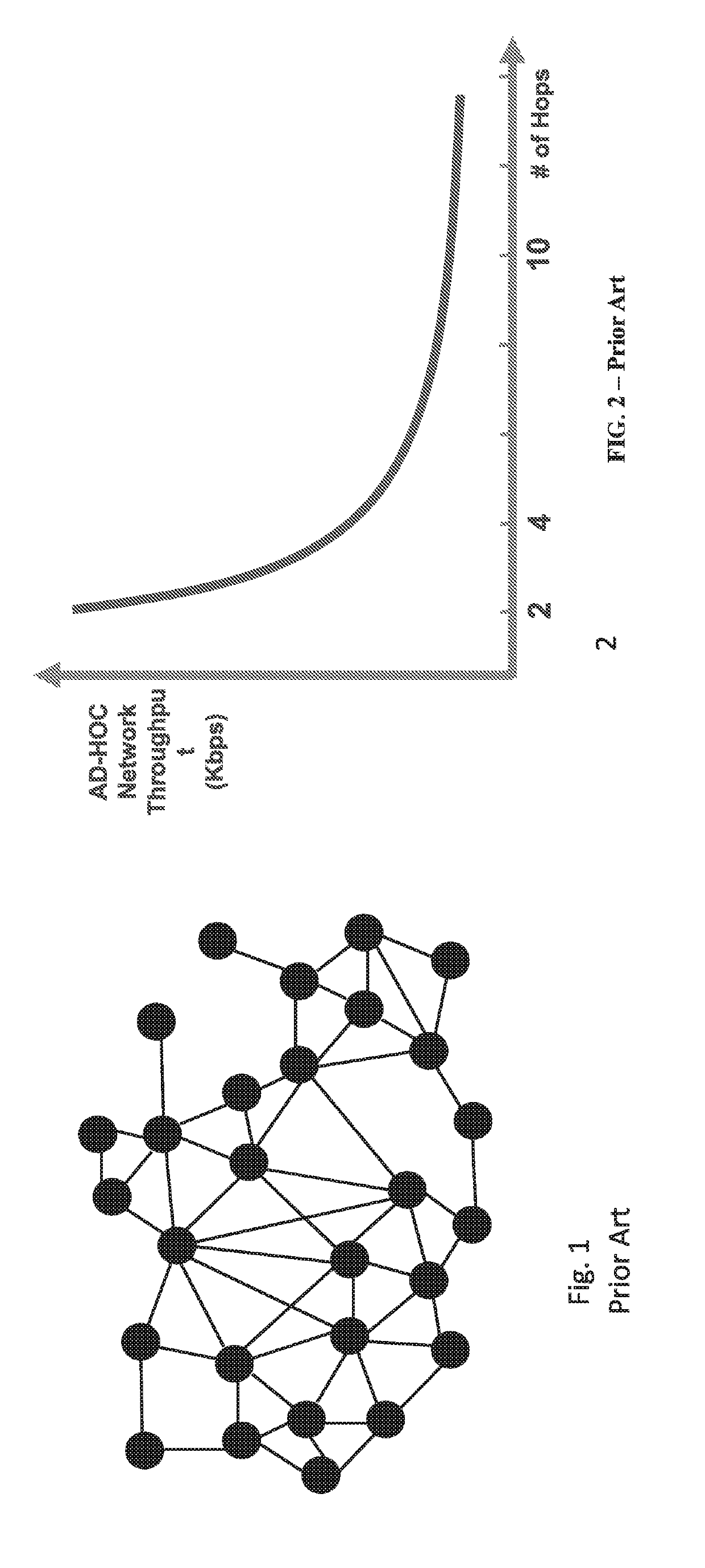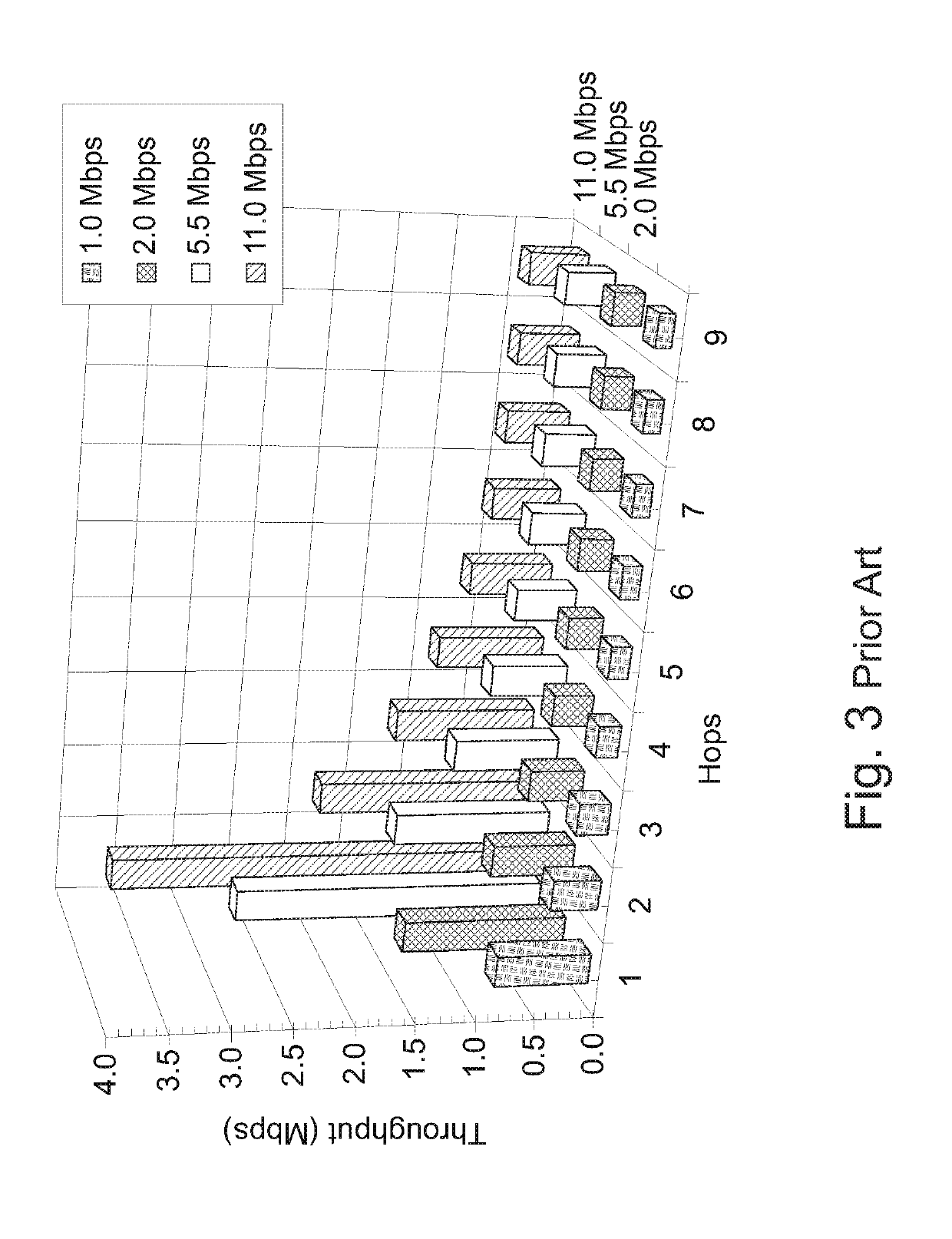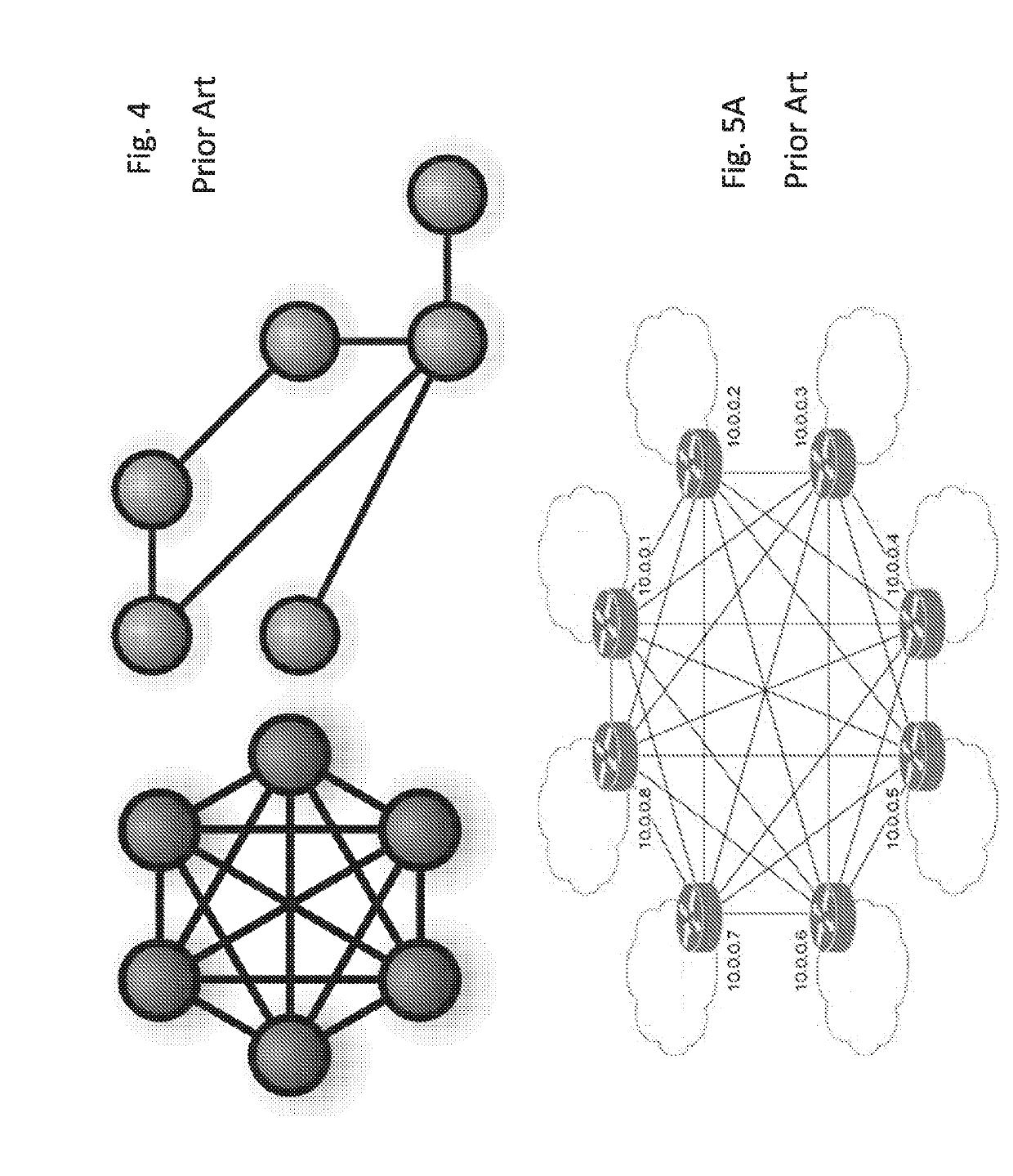Ad hoc network routing
a network routing and ad hoc technology, applied in the field of ad hoc networks, can solve the problems of large delay, image may arrive too late, and arrive in pieces
- Summary
- Abstract
- Description
- Claims
- Application Information
AI Technical Summary
Benefits of technology
Problems solved by technology
Method used
Image
Examples
Embodiment Construction
[0085]The present invention, in some embodiments thereof, relates to an ad hoc network.
[0086]Embodiments may provide an improved way of externally and temporarily manipulating ad-hoc network or mesh network routing protocols in order to allow large high-resolution images (photo or video) to be transferred in real-time or near real-time between the recording device and the destination where they are not directly visible, avoiding traffic bottlenecks along the way that could hinder the real-time high-resolution images to arrive from source to destination with multiple hops (one or more) along the way. The external routing protocol manipulation is initiated upon a request for images from a specific device on the ad-hoc network, and once such a high-resolution images (photo or video) transfer is completed, the routing protocol manipulation is reversed in order for the ad-hoc network to go back to normal operation.
[0087]An embodiment may provide an overlay network riding on top of the ad...
PUM
 Login to View More
Login to View More Abstract
Description
Claims
Application Information
 Login to View More
Login to View More - R&D
- Intellectual Property
- Life Sciences
- Materials
- Tech Scout
- Unparalleled Data Quality
- Higher Quality Content
- 60% Fewer Hallucinations
Browse by: Latest US Patents, China's latest patents, Technical Efficacy Thesaurus, Application Domain, Technology Topic, Popular Technical Reports.
© 2025 PatSnap. All rights reserved.Legal|Privacy policy|Modern Slavery Act Transparency Statement|Sitemap|About US| Contact US: help@patsnap.com



